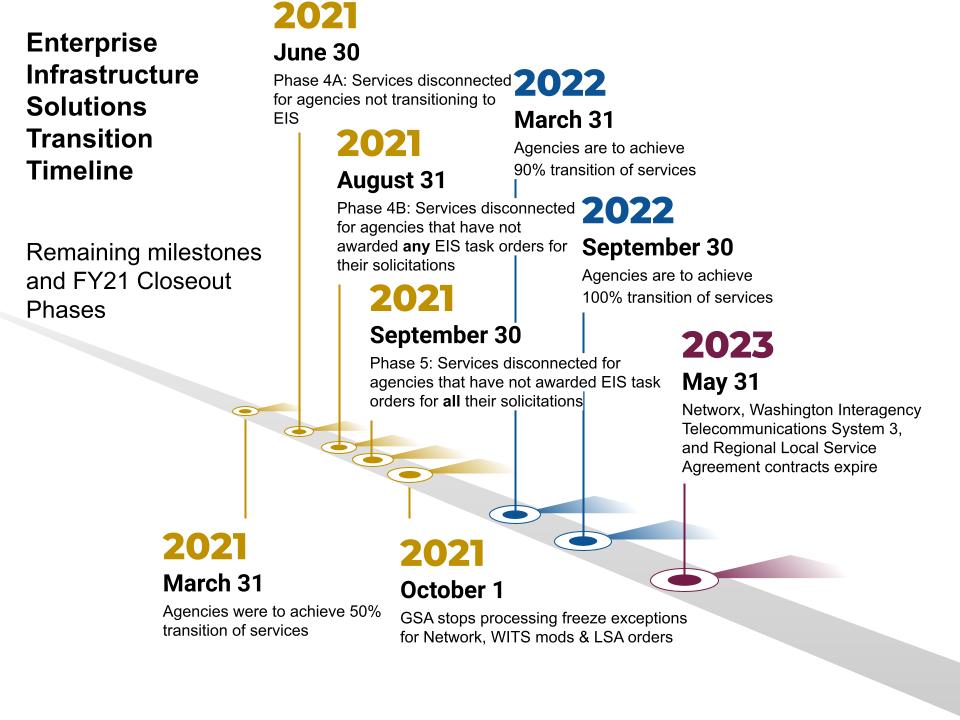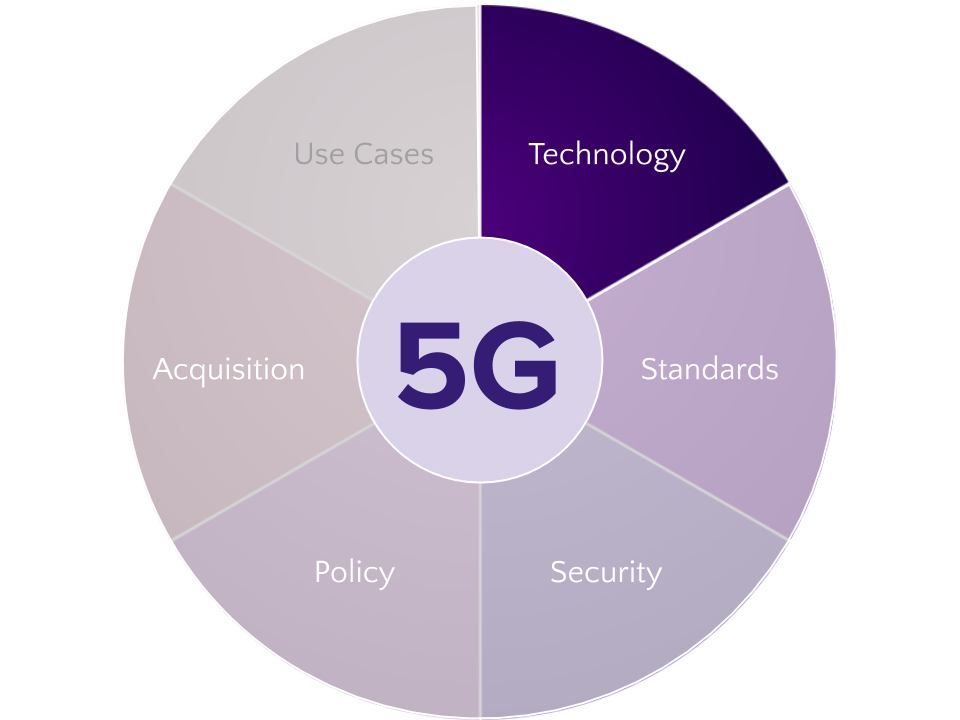In case you missed it, we are invoking the continuity of service (CoS) clause for these expiring enterprise network and telecommunications contracts:
- Networx
- Local Service Contracts
- Washington Interagency Telecommunications System (WITS) 3
This gives agencies the opportunity to sign on for an additional 12 months of service. During this time, agencies must either complete their transition to Enterprise Infrastructure Solutions or find another solution to prevent interruption of services.
Invoking the CoS clause helps reduce the risks associated with not completing transition by the original May 31, 2023 deadline. It also provides more time for agencies to address challenges resulting from delayed task order awards, supply chain disruptions caused by the pandemic, and other important priorities.
The transition to EIS has significant governmentwide cybersecurity, mission, operational, and financial implications. Agencies that don’t move their services before the CoS period ends could face:
- Interruption of critical public services.
- Increased cyber vulnerabilities.
- Failure to carry out their missions.
More time to complete transition
GSA awarded EIS in 2017 to replace these expiring contracts, beginning a period of transition. Many federal agencies aren’t on track to complete their transition to EIS before the May 2023 expiration.
As of February 28, 2022, only 89% of the planned task orders for transition have been awarded. Also, 45% of the nine million services governmentwide (like telephone lines and high bandwidth secure internet access) are still in use.
What this means for agencies
Agencies that want to take advantage of the CoS period can do so only if:
- The agency signs a Memorandum of Understanding (MOU) with GSA by September 30, 2022
- The MOU is signed by the agency head, or follows agency delegation of authority.
- The designee is accountable for Chief Information Officer (CIO), Chief Acquisition Officer (CAO), and Chief Financial Officer (CFO) functions.
At the end of the 12-month CoS period (May 31, 2024), any services remaining active on the expiring contracts will be disconnected according to the terms and conditions of their respective contracts. They cannot be reinstated on those contracts. This will occur at the contract level, not on the agencies’ task orders.
If an agency doesn’t transition before the exercised option or CoS period ends, the agency must:
- Identify the services that will be cut off when the CoS period ends.
- Develop a contingency plan to maintain operation of those services on another contractual arrangement.
- Implement the contingency plan to ensure mission isn’t disrupted when the contracts expire and services are disconnected.
If an agency does not sign the MOU, GSA will remove the agency from the Networks Authorized User List (NAUL) for the expiring contracts in October 2022. Contractors will then begin the disconnect process as early as November 2022 and complete it no later than May 2023.
What this means for our industry partners
As agency transition rates increase, so will the demand on industry partners to implement task orders and execute disconnects quickly.
We value our industry partners and will work closely together as we execute contractual actions over the next year. We’ll also look to our partners to continue supporting our agency customers as they
- Expedite EIS orders.
- Explore other options for maintaining service on another contractual arrangement.
- Reconcile records for services that are being disconnected.
Next steps
If your agency is mid-transition, weigh the pros and cons of signing the MOU and make a risk-based decision appropriate for your agency. We’re here to help you assess your transition risk and understand your acquisition options.
Agencies with services on the expiring contracts should expect a message from GSA in May 2022 including the MOU. If you need more information or would like to meet, please contact your assigned GSA Solutions Broker.
Follow ITC on Twitter and LinkedIn, and subscribe for blog updates.



